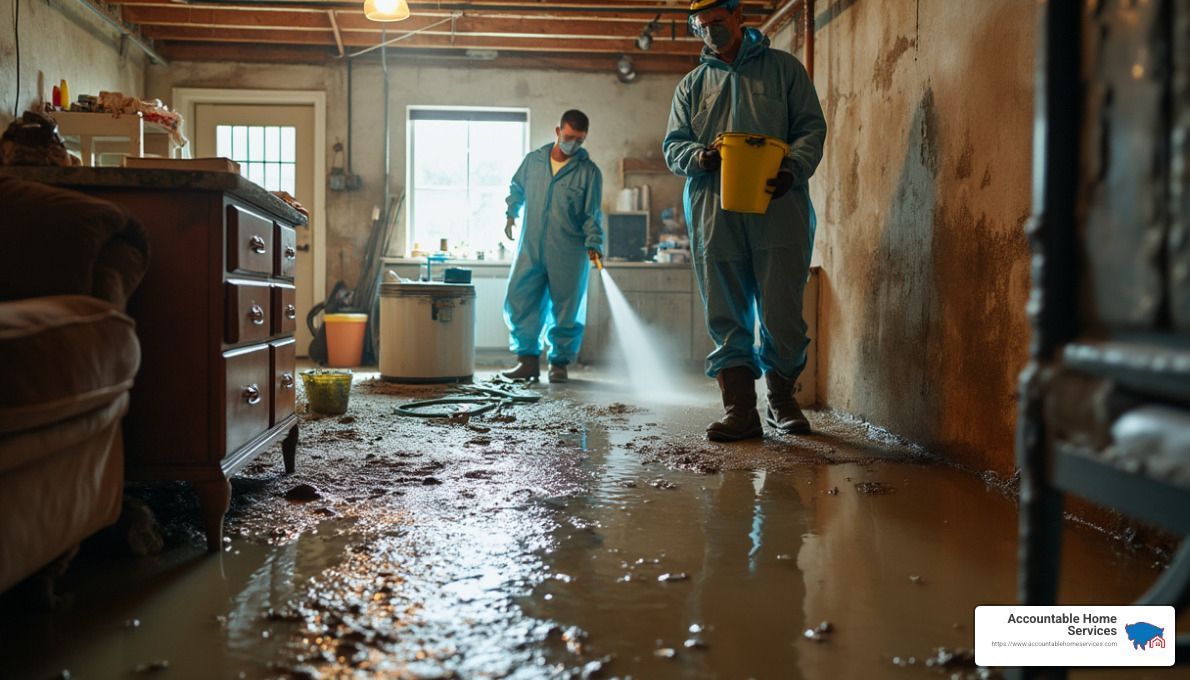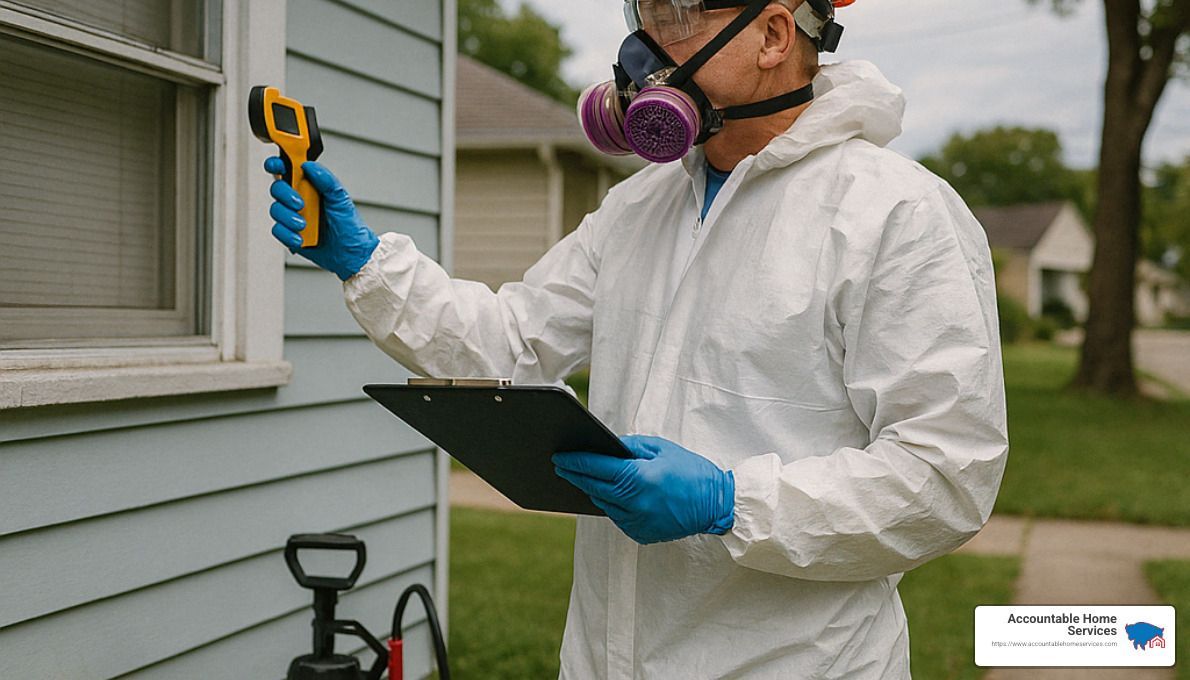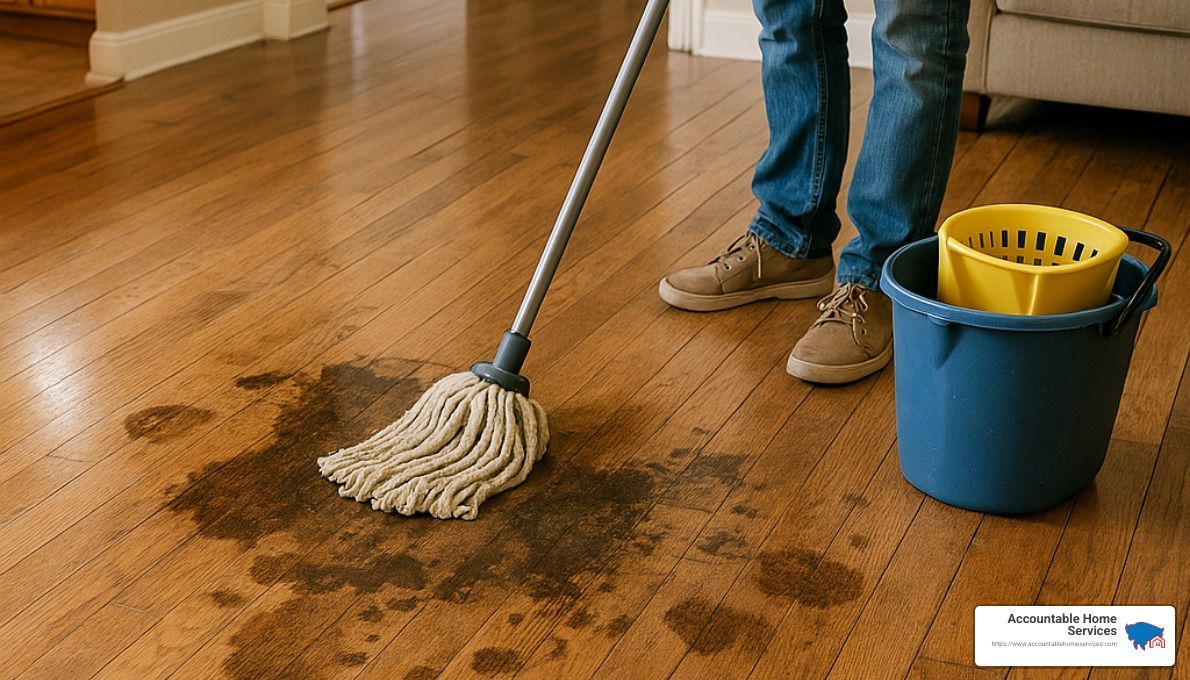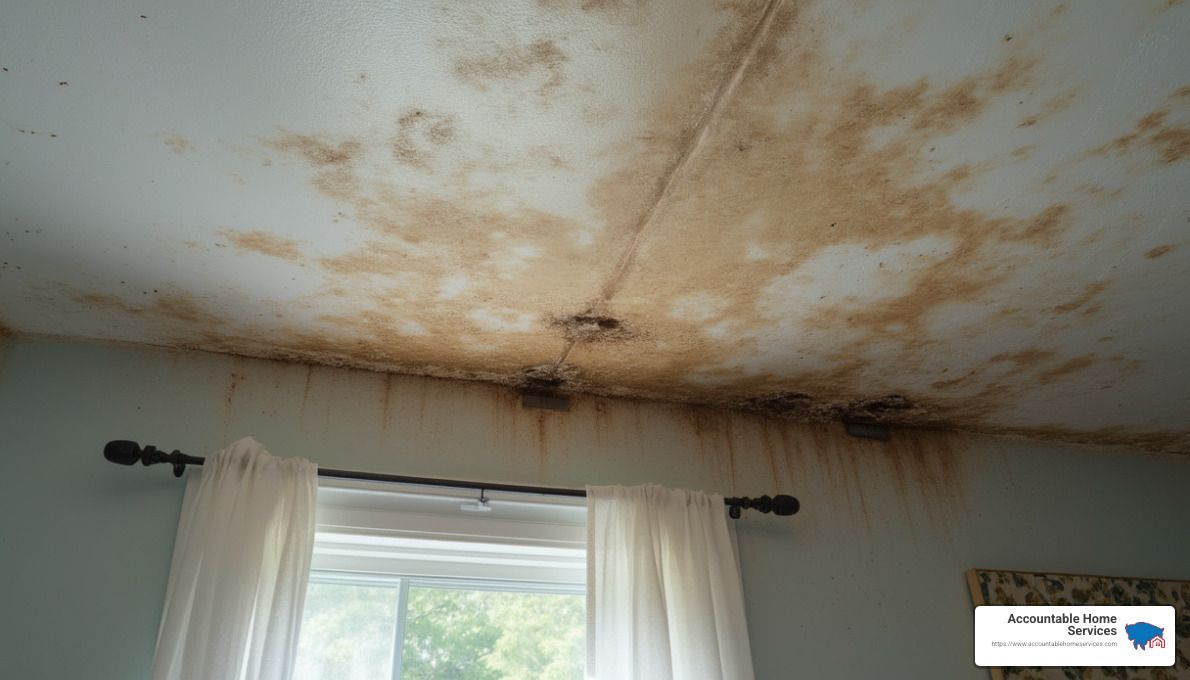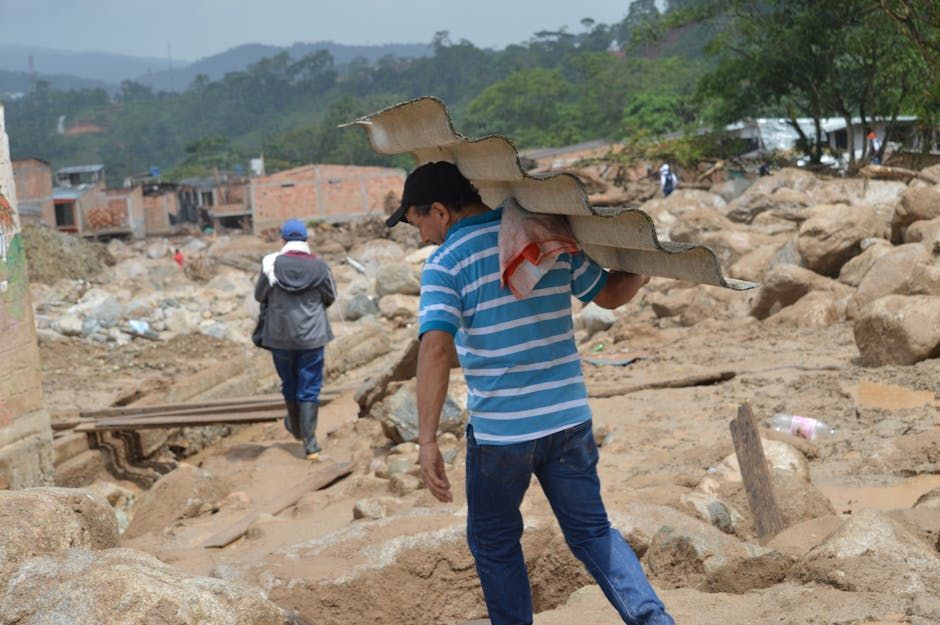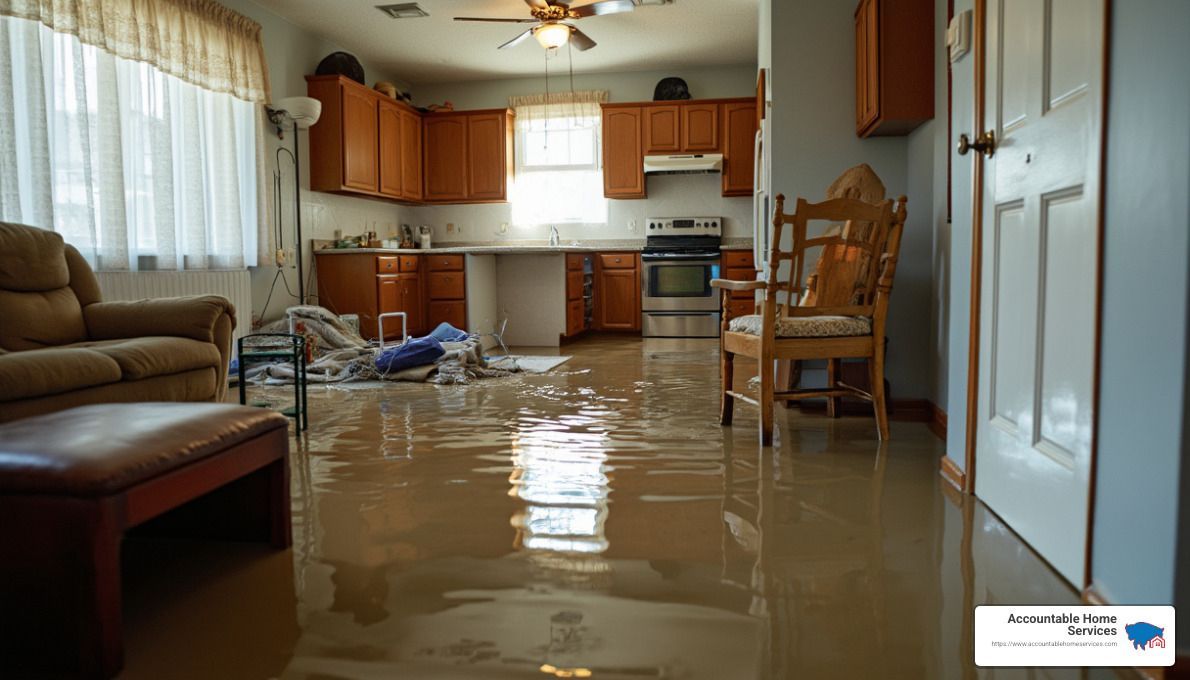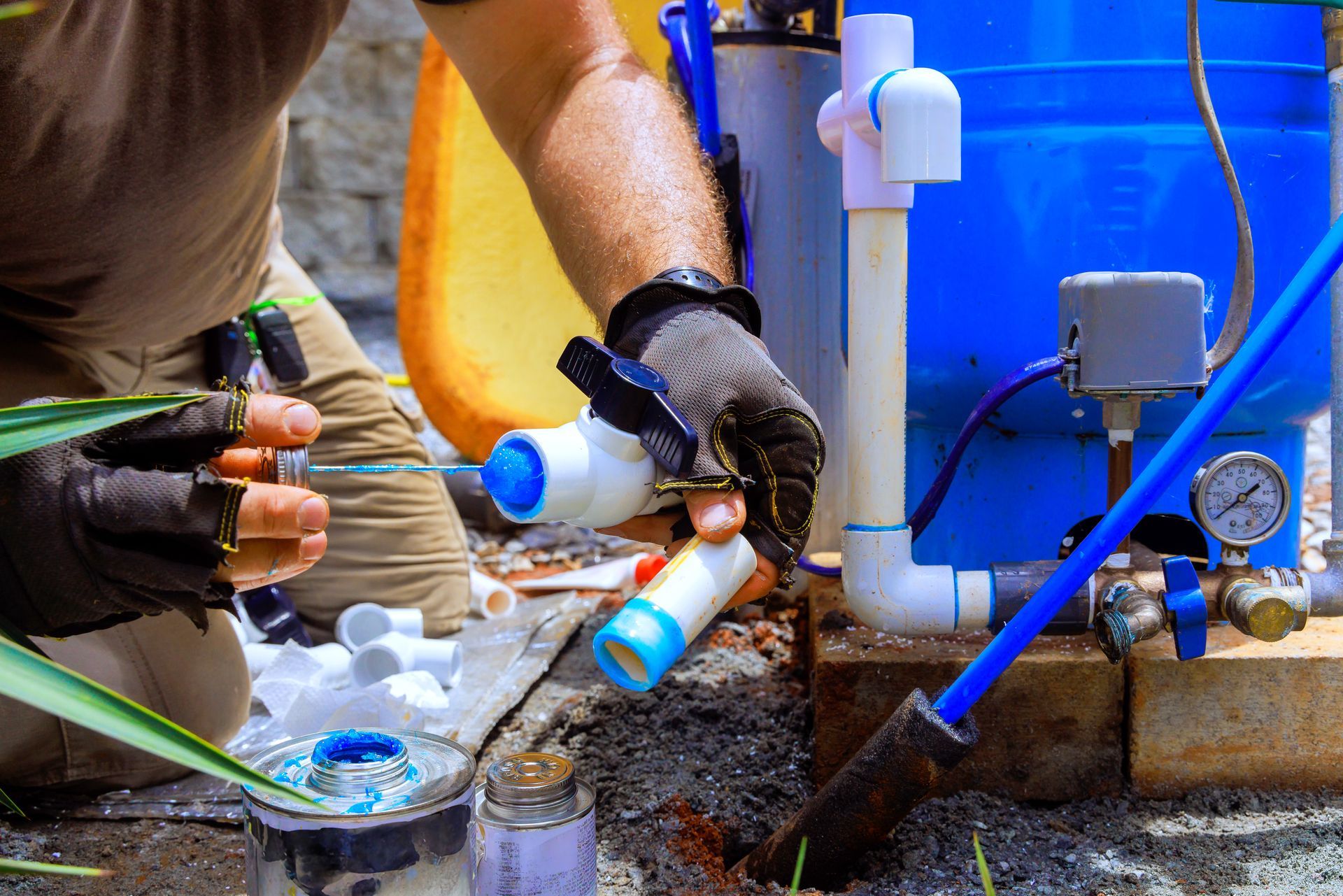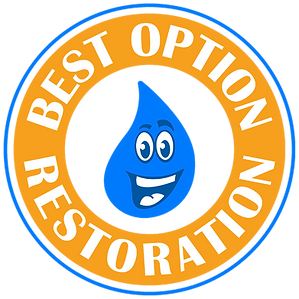Blog
Water damage repair estimates typically range between $1,240 and $6,270 nationwide, with an average cost of $3,291. More specifically, expect to pay:
- Clean water damage: $3 - $4 per square foot
- Gray water damage: $4 - $6.50 per square foot
- Black water damage: $7 - $7.50 per square foot
These basic prices cover water removal, drying, and initial restoration, but additional factors like mold remediation and structural repairs will increase your final costs.
Whether caused by burst pipes, flooding, or appliance leaks, water damage is stressful and costly for homeowners. As someone who helps families in the Denver area steer these tough situations, I've learned that understanding and planning for water damage repair estimates can save you both money and headaches.
My name is Mike Martinez, owner of Accountable Home Services, and I have extensive experience providing homeowners with clear, reliable water damage repair estimates, ensuring transparent communication and efficient restoration every step of the way.

Understanding Water Damage Repair Estimates
Water damage can turn your peaceful home into a stress-filled environment in just minutes. Whether it's from a broken pipe, overflowing bathtub, or severe storm, understanding what repairs will cost becomes an immediate concern for most homeowners. Water damage repair estimates are comprehensive assessments that outline exactly what you can expect to pay to restore your home to its pre-damage condition.
These estimates aren't just numbers on paper—they're your roadmap through the restoration process. A good estimate helps you plan financially, provides essential documentation for your insurance company, establishes clear expectations between you and your restoration team, and most importantly, helps prevent those nasty surprise expenses that can pop up mid-project.
When we provide water damage repair estimates at Accountable Home Services, we make sure to include everything: water removal costs, drying and dehumidification expenses, cleaning and sanitizing, repairs to damaged materials, potential mold remediation, and all labor and equipment costs. We believe in transparency—you should know exactly what you're paying for.
"An estimate from a professional restoration company is the best way to obtain a water damage restoration cost."
This industry wisdom holds true because professional restorers have specialized training and equipment to detect hidden moisture and damage that might not be visible to the untrained eye. That wet spot on your ceiling might seem minor, but a professional can determine if it extends into your insulation, electrical systems, or structural components.
Getting an Accurate Water Damage Repair Estimate
Accuracy matters tremendously when it comes to water damage repair estimates. An incomplete assessment can lead to budget problems, repair delays, and sometimes even inadequate restoration that leaves lingering issues in your home.
To make sure you're getting a reliable estimate, start by getting multiple professional evaluations. We typically recommend having 2-3 reputable restoration companies assess the damage. This gives you a clearer picture of what reasonable costs should be and helps you identify if someone is significantly over or under-quoting the job.
Make sure whoever inspects your home is conducting a thorough examination. At Accountable Home Services, we don't just look at obvious water damage—we investigate behind walls, under floors, and in ceilings where water often migrates. We use advanced moisture detection tools like infrared cameras and professional-grade moisture meters to find hidden problems before they become bigger issues.
Always request itemized estimates that break down exactly what you're paying for. This level of detail not only helps you understand the costs but makes it easier to compare quotes from different providers. Don't hesitate to ask about potential additional costs too. Water damage restoration sometimes reveals unexpected issues once work begins, so understanding how these might affect your final bill is important.
Finally, verify credentials before committing to any restoration company. The team providing your estimate should be properly licensed, insured, and certified in water damage restoration. This protects both you and your property throughout the restoration process.
By taking these steps to secure an accurate estimate, you're setting yourself up for a smoother restoration experience with fewer surprises along the way. When water damage strikes your Denver home, having this knowledge can make all the difference between a stressful ordeal and a manageable situation with predictable outcomes.
Factors Influencing Water Damage Repair Costs
When you're facing water damage in your home, one of your first questions is likely, "How much is this going to cost?" Understanding the key factors that influence your water damage repair estimates can help you plan and budget effectively. Let's clearly break down the main cost influencers so you can confidently steer your restoration journey.
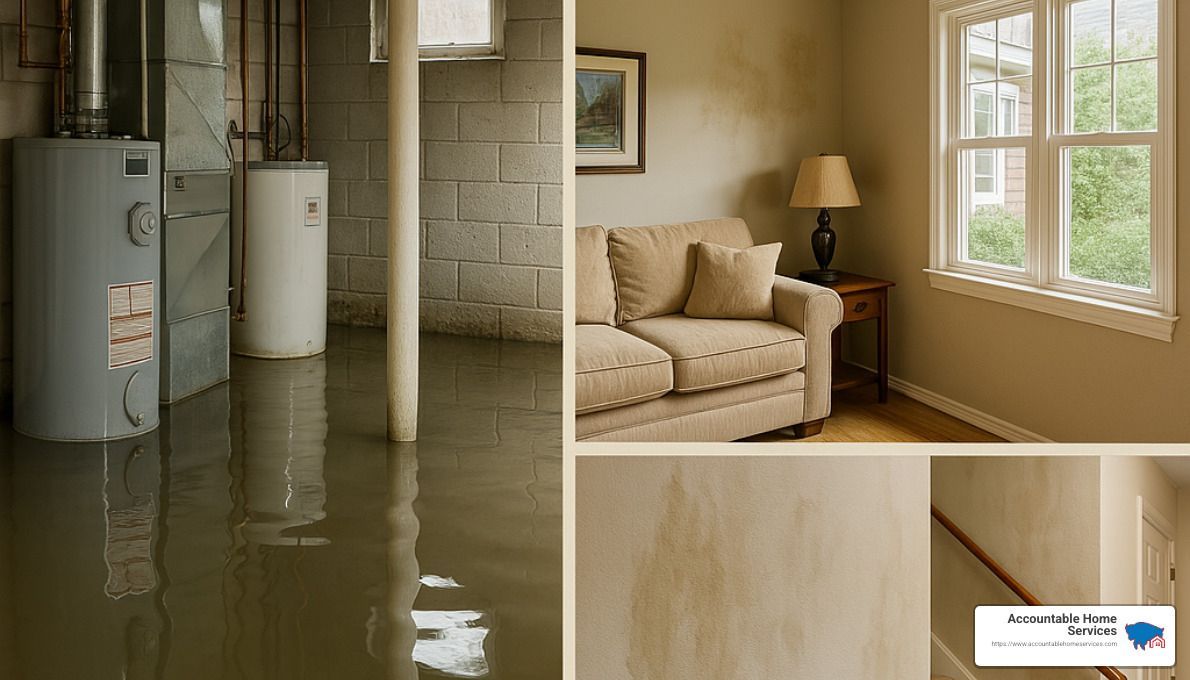
Type of Water: Clean, Gray, and Black
Believe it or not, not all water damage is created equal. Restoration professionals classify water into three categories based on how contaminated it is—and each type affects how much you'll pay for repairs.
Clean Water (Category 1) is the least expensive and easiest to deal with since it comes from sources that are free of contaminants like broken water supply lines, overflowing bathtubs (with clean water), or appliance leaks. It typically costs around $3 to $4 per square foot to fix and poses minimal health risks.
Gray Water (Category 2) is slightly more complicated. It contains contaminants that might cause illness or discomfort, coming from sources like washing machine or dishwasher leaks, aquarium leaks, or toilet overflows without feces. Repairs for gray water damage generally run between $4 and $6.50 per square foot.
The most serious is Black Water (Category 3). This water is significantly contaminated and dangerous, originating from sewage backups, river flooding, or standing water where bacteria and mold have started growing. Because black water demands extensive cleanup, sanitization, and often complete material replacement, repairs are pricier—typically around $7 to $7.50 per square foot.
Our lead technician at Accountable Home Services often explains to homeowners, "The type of water involved greatly determines your final cost. Black water situations require specialized equipment and safety measures, significantly increasing restoration expenses."
It's also important to remember that water can become more contaminated over time. Clean water left untreated for more than 48 hours can quickly escalate to gray or even black water, raising both your health risks and repair costs. For more information on water contamination guidelines, check out this EPA guidance on floodwater contamination.
Extent and Location of Damage
Another big factor that shapes your water damage repair estimates is how widespread the damage is and where it occurred. Naturally, the larger the damaged area, the more restoration will cost. Small areas under 100 square feet will fall on the lower end of the cost spectrum, while medium (100–300 sq.ft.) and larger areas (over 300 sq.ft.) will require additional materials, labor, and equipment, raising the final bill accordingly.
But size isn't the only concern: the specific location matters, too. Basement flooding, for instance, is notoriously more challenging. It requires specialized pumping equipment, can threaten structural integrity, and usually involves dealing with furniture and carpeting replacements. Basement water damage repair costs can range dramatically—from around $500 up to $85,000 if foundational elements are impacted.
Ceiling damage is also tricky and typically costs between $450 and $1,600. Water often spreads horizontally, affecting wiring and insulation, and may indicate larger issues like roof leaks or plumbing failures upstairs.
Damaged walls usually run between $300 and $850 due to insulation and electrical complications and the difficulty of pinpointing exact moisture locations. If water damage involves more than one floor, costs can quickly increase as repairs become more expansive and complex.
At Accountable Home Services, we often see higher-than-average costs with finished basements here in Denver, especially those cozy spaces with plush carpets and comfortable furniture. While great for family movie nights, these materials typically require complete replacement after water damage, raising the overall restoration costs.
Materials and Structural Components
The materials affected by water damage significantly impact your repair bill, too. Some materials are easier and cheaper to salvage, while others nearly always need full removal and replacement.
For instance, flooring materials can vary widely. Carpeting damage typically costs $200–$550 to deal with and usually needs total replacement if saturated. Hardwood flooring is similarly priced for minor repairs ($200–$550), but severe cases could cost up to $25 per square foot for complete refinishing or replacement. Laminate flooring usually can't handle water at all and generally requires full replacement, while tile flooring tends to resist water best, typically needing only grout repairs.
The story is similar for wall materials. Drywall repair and replacement usually costs $1.50–$3.50 per square foot, while plaster walls cost more—between $2 and $10 per square foot. Insulation almost always needs to be replaced after water damage to keep your home energy-efficient and mold-free.
Structural components, like support beams, subflooring, and foundations, can drive costs up quickly if compromised. Foundation repairs alone can range between $5,000 and $15,000 or more. Our structural specialist at Accountable Home Services often reminds homeowners, "Surface water damage may look minor, but it can hint at hidden structural problems below—making expert inspections crucial."
Accurate water damage repair estimates depend heavily on identifying the true extent of the damage—both visible and hidden. This is why a detailed, professional evaluation is the best first step when water damage strikes your home. At Accountable Home Services, we take pride in providing thorough, transparent assessments, helping Denver homeowners make informed decisions and regain peace of mind during stressful situations.
Average Costs of Water Damage Restoration
Understanding the typical costs for water damage restoration can help you set realistic expectations when reviewing professional water damage repair estimates. While every situation is unique, having a general sense of national averages can put your mind at ease and help you plan financially.
Across the United States, the average cost for a water damage restoration project typically falls between $3,291 and $3,814. However, depending on how extensive the damage is and the unique circumstances of your home, costs can vary widely. Most homeowners find themselves paying anywhere from $1,240 to $6,270, although severe or complex situations can easily exceed this range.
The Institute of Inspection Cleaning and Restoration Certification (IICRC) categorizes water damage into four classes, clearly defining the costs and efforts involved in restoration.
Class 1 (Minimal Damage) occurs when only a small area with materials that don't absorb much water is affected—for example, a minor appliance leak caught right away. Costs in these cases are usually quite manageable, typically running between $150 and $400, with drying completed in just 1-2 days.
Class 2 (Entire Room Damage) involves an entire room, affecting carpeting, walls, or padding. Damage might extend about 12-24 inches up the walls. A broken pipe in your bathroom or moderate flooding often leads to this scenario. Restoration costs typically range from $500 to $1,000 and take around 2-4 days for proper drying.
Class 3 (Saturation Damage) is more serious, as water usually comes from overhead—think roof leaks or plumbing issues on upper floors. These incidents impact ceilings, walls, carpets, insulation, and subfloors. Repairing this kind of damage can cost anywhere from $1,000 to $3,000 or more, with drying typically taking 3-5 days, followed by extensive repairs afterward.
Finally, Class 4 (Long-Standing or Special Damage) is the most severe classification. This level of damage involves deeply saturated materials like hardwood floors, stone, or concrete, which require specialized drying techniques. Examples include long-term leaks or extensive flooding that wasn't immediately addressed. Due to the complexity, specialty equipment, and prolonged timelines involved, restoration costs can escalate dramatically—often ranging from $20,000 up to $100,000, and taking weeks or even months to fully restore.
Cost Per Square Foot Based on Water Type
As we've touched on previously, the type of water contamination significantly impacts your restoration costs. To make it easy:
Clean Water (Category 1), such as water from a burst pipe or sink overflow, typically costs about $3.75 to $4.25 per square foot. So, if you experience a burst pipe flooding roughly 300 square feet of your home, the basic water extraction and drying alone might come to around $1,125 - $1,275. You'd also need to factor in repairs to affected materials.
Gray Water (Category 2)—for instance, dishwasher leaks or washing machine overflows—might cost more, usually between $4.10 and $6.50 per square foot, since sanitizing is required in addition to extraction and drying. A typical washing machine overflow in a 200 square-foot laundry room might initially cost between $820 and $1,300, before accounting for additional repairs or material replacements.
Black Water (Category 3), which is highly contaminated water from sewage backups, flooding rivers, or stagnant standing water, typically requires thorough cleaning, disinfection, and disposal of affected materials. Costs here rise significantly, to approximately $7 to $7.50 per square foot due to the health hazards involved. For example, a small 150 square-foot bathroom affected by a sewage backup could cost roughly $1,050 to $1,125 just for the initial cleanup, not including the significant added expense for replacing contaminated items and materials.
Our senior estimator at Accountable Home Services explains, "The per-square-foot pricing is a starting point, but real-world scenarios often include additional expenses for structural repairs, mold remediation, and replacing damaged materials. This is why accurate, professional water damage repair estimates are so critical."
Understanding Damage Classes and Associated Costs
Having a clear understanding of damage classes and their associated costs can help you better interpret water damage repair estimates and plan accordingly. Each class not only involves different levels of expense but also requires different restoration approaches and timelines.
For instance, minimal Class 1 damage is often relatively quick and inexpensive to handle, while advancing to Class 2 or Class 3 means higher overall restoration costs due to deeper water penetration and more extensive material replacement requirements.
Class 4 situations represent a significant leap in complexity, often involving structural repairs, prolonged drying, and specialized equipment to handle deeply saturated, dense materials. These scenarios highlight the importance of immediate action when facing water damage—acting quickly can limit the damage class escalation, saving you significant costs in the long run.
At Accountable Home Services, we serve Denver homeowners with honest evaluations and transparent pricing, ensuring you understand exactly what your water damage repair estimate covers. Our commitment to clear communication and professional excellence helps you steer this stressful experience as smoothly as possible.
Cost Breakdown by Common Water Damage Scenarios
Dealing with water damage can feel overwhelming, especially when trying to understand the costs involved. Every situation is different, but by exploring some common scenarios, you can get a clearer picture of what your water damage repair estimates might look like. Let's explore some typical situations we regularly help homeowners steer here in the Denver area.
Burst Pipes and Plumbing Failures
Burst pipes and plumbing issues are incredibly common during Denver's chilly winters. When pipes freeze and burst, the damage can quickly spread throughout your home, requiring immediate attention to minimize costs.
Most homeowners facing burst pipe situations can expect to pay between $500 and $2,000 for repairs. However, this can increase significantly depending on a few important factors, such as the location and complexity of the damage. For example, leaks behind walls, beneath floors, or in difficult-to-reach areas typically require more labor and specialized equipment, driving up costs. Additionally, damage impacting multiple rooms or compromising electrical systems can lead to higher expenses.
A basic cost breakdown typically includes pipe repair ($150 - $350 per linear foot), water extraction and drying ($3.75 - $4.25 per square foot), drywall repairs ($1.50 - $3.50 per square foot), and flooring repairs or replacements, which vary based on material.
Fortunately, there are steps you can take to reduce the likelihood of burst pipes. Insulate exposed pipes in colder areas of your home, let faucets drip slightly in freezing temperatures, and always maintain a consistent indoor temperature—even if you're away. And don't forget, knowing exactly where your main water shut-off valve is located can significantly limit damage if the worst happens.
As our emergency response team likes to say, "Quick action is your wallet's best friend when pipes burst—shutting off the water immediately can save you thousands."
Flooding and Natural Disasters
Flooding from severe weather or natural disasters often leads to extensive property damage and higher restoration costs. Denver homeowners facing flooding commonly see repair bills ranging from $2,000 to more than $10,000, with severe cases easily exceeding $100,000.
Several factors play a role in driving these costs. Floodwater is often categorized as black water (Category 3), which means it's highly contaminated and demands extra precautions and cleanup steps. Other considerations include the depth of standing water, how long materials have been submerged, the type of materials damaged, and any structural impacts, such as compromised foundations or frames.
The restoration process after flooding involves detailed and rigorous steps. First, our team uses powerful pumps and industrial vacuums for water extraction. Next, damaged materials such as carpeting, drywall, insulation, and furniture need to be removed safely. Structural drying with professional-grade dehumidifiers and air movers follows to ensure complete moisture removal. Sanitization is critical—especially after external flooding—to prevent harmful mold and bacteria. Finally, rebuilding work begins, restoring your home’s structural integrity and comfort.
Flood damage is no joke, and DIY methods usually aren't viable. As our field supervisor humorously points out, "Trying to remove floodwaters yourself is like bringing a mop to a tsunami—it’s just not gonna cut it!"
The EPA provides helpful guidance on managing floodwater contamination, which is worth reviewing as part of your post-flood recovery plan.
Sewage Backups and Contaminated Water
Let's face it—sewage backups are the homeowner’s worst nightmare. Not only is the damage unsightly and unpleasant, but it also poses severe health risks due to contamination. As a result, sewage cleanup tends to be more costly, typically ranging from $2,000 to over $5,000, with extensive contamination situations sometimes exceeding $10,000.
Sewage cleanup costs are higher primarily because of the necessary specialized equipment, protective gear, and safety procedures. Porous materials—think carpeting, drywall, upholstery—that come into contact with sewage cannot be restored and must be safely removed and discarded. This adds to the overall expense in restoration. Additionally, due to the hazardous nature of sewage (it contains harmful bacteria and pathogens), specialized sanitization and containment procedures are required.
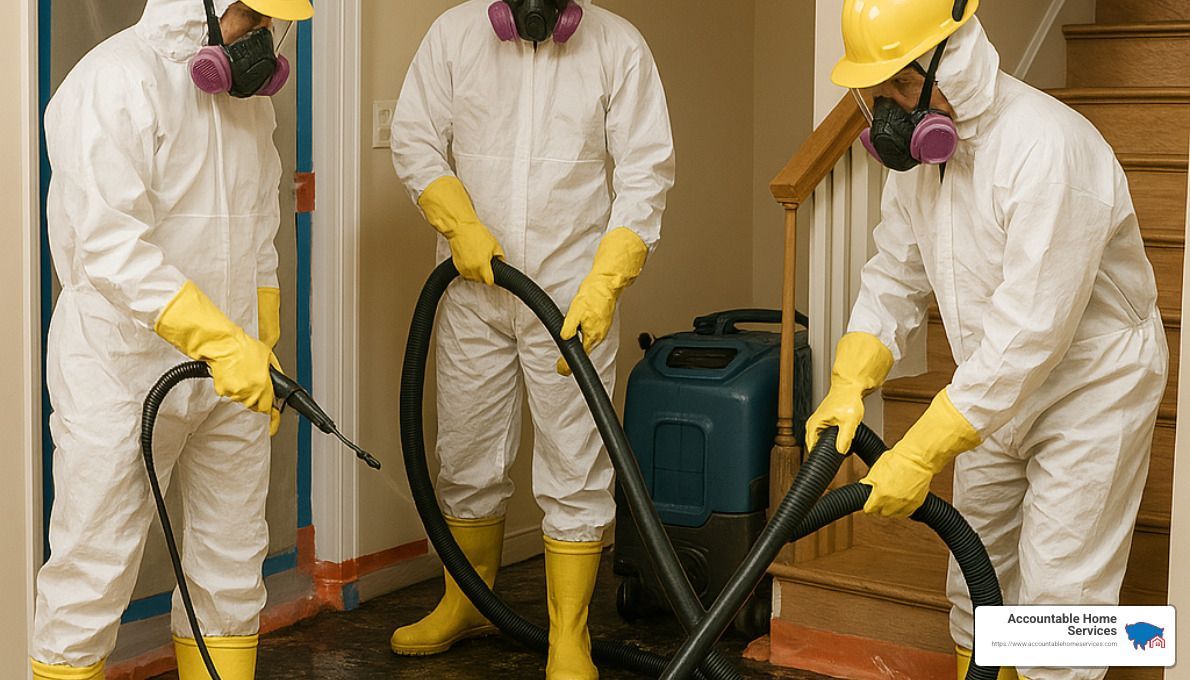
During cleanup, our team sets up containment barriers to prevent cross-contamination, uses HEPA filtration to remove airborne contaminants, applies antimicrobial treatments, and ensures thorough testing to confirm a safe and sanitary environment before reconstruction begins.
According to our biohazard remediation specialist, "Cleaning up after a sewage backup isn't just about getting rid of the visible mess—it's about making sure your home is safe to live in again."
When dealing with sewage damage, it’s critical to work with certified professionals who understand exactly how to manage these hazardous situations. At Accountable Home Services, we follow strict industry standards and safety protocols, providing Denver homeowners with peace of mind knowing their home and health are in good hands.
How Insurance Coverage Affects Water Damage Repair Costs
When dealing with unexpected water damage in your home, one of the first questions you'll probably ask yourself is, "Will my insurance cover this?" Understanding how your homeowners insurance policy affects your water damage repair estimates can be the difference between manageable expenses and significant financial stress.
Most standard homeowners insurance policies typically cover water damage that's considered sudden and accidental. Think of situations like a burst pipe, an overflowed washing machine, or a broken hose connection on your dishwasher. These kinds of internal incidents are usually covered, provided you document everything clearly and report it promptly.
However, not every water damage scenario is covered by standard insurance. Common situations where coverage might not apply include damage from external flooding (this usually requires separate flood insurance), gradual leaks that happen slowly over time, and issues arising from lack of regular maintenance. Additionally, most standard policies don't automatically cover sewer backups, although you can typically add coverage for this through a separate rider.
Our insurance liaison here at Accountable Home Services often reminds homeowners, "Insurance coverage for water damage can be confusing. The source and cause of the damage play a major role in determining what's covered and what's not."
Filing an Insurance Claim for Water Damage Repairs
If you suspect your water damage is covered, it's important to handle your insurance claim methodically to maximize your chances of getting the full benefit from your policy.
Start by documenting everything—take clear photos and videos before any cleanup starts. Immediately notify your insurance company; prompt reporting is usually required to ensure coverage.
Next, get a detailed, professional water damage repair estimate from an experienced restoration company. At Accountable Home Services, we provide thorough, itemized estimates that clearly outline the scope of work, materials needed, labor costs, and potential additional services like mold remediation. These professional evaluations are invaluable—they give insurance adjusters the detailed information they need to process your claim quickly and fairly.
Throughout the restoration process, keep track of all your expenses, such as emergency repairs or temporary housing. Hold onto your receipts—they're essential for reimbursement.
When choosing a restoration partner, look for a company that has experience working directly with insurance adjusters. At Accountable Home Services, we're committed to simplifying your claims experience. We offer direct insurance billing and collaborate closely with adjusters so you spend less time on the phone and more time focusing on getting your life back to normal.
When Insurance Doesn't Cover the Damage
Sometimes homeowners get an unwelcome surprise: their damage isn't covered by insurance. Maybe it's because the leak was gradual, the source was external flooding, or routine maintenance was neglected. Whatever the reason, finding out you're paying from your own pocket for repairs can be unsettling.
In these situations, exploring your financial options can ease the stress. Many restoration companies offer convenient payment plans or financing options. Alternatively, you might look into a home equity loan or line of credit, which often comes with lower interest rates compared to credit cards. Of course, having an emergency fund designated for home repairs is always helpful, so you're prepared when unexpected expenses arise.
Also, in the event of a large-scale disaster, FEMA or other local agencies might offer assistance programs if your area is officially declared a disaster zone.
When you're covering repairs yourself, the importance of accurate water damage repair estimates is even greater. You want transparency and confidence that you're paying only for what's truly necessary, with no hidden surprises or unnecessary charges.
At Accountable Home Services, that's our promise—we provide clear, detailed estimates and openly discuss options that fit your budget. We're here to help you steer through the uncertainty, providing expertise and support every step of the way.
DIY vs. Professional Water Damage Restoration
Experiencing water damage in your home can feel overwhelming, and it's natural for homeowners to think about handling the cleanup themselves to save some money. While a DIY approach might seem like a good idea for minor incidents, it can end up causing more harm—and costing more—in the long run.
So when should you roll up your sleeves, and when should you bring in a professional like Accountable Home Services? Let's break down exactly what you need to consider before tackling water damage restoration yourself.
Why Professional Water Damage Repair Estimates Matter
Professional water damage repair estimates aren't just about numbers—they provide a clear, accurate picture of the entire restoration process. Here's why getting an expert assessment can make all the difference:
First, professionals have specialized equipment designed to detect moisture in hidden places. Water is sneaky—it can seep behind walls, underneath flooring, and into structural components, causing damage you can't see with the naked eye. At Accountable Home Services, our team uses thermal imaging cameras, professional-grade moisture meters, hygrometers, and borescopes to find every hidden drop of water. Missing these areas can lead to costly secondary issues, such as mold problems or structural deterioration.
Second, experts know how to properly categorize the type of water you're dealing with. Is it clean water from a broken pipe, gray water from an appliance overflow, or black water—highly contaminated sewage or floodwater? Each of these requires a different approach, specialized equipment, and various safety measures to protect your home and family.
Third, professional estimates help ensure full compliance with insurance requirements. When filing a claim, insurance companies typically require detailed documentation of the damage. Professional water damage repair estimates from certified restoration companies like ours meet these requirements and improve your chances of maximizing your coverage.
Lastly, an accurate estimate provides a realistic timeline for the entire restoration process. Knowing how long repairs will take can help you plan your life around the disruption, minimize downtime, and reduce overall stress.
"In our experience, what often looks like a simple cleanup to homeowners frequently involves hidden damage that only becomes apparent weeks later—when it's more expensive to fix," explains our assessment team leader at Accountable Home Services. "Getting a professional involved from the start can actually save you time, money, and headaches down the road."
Considerations for DIY Water Damage Repair
Of course, there are times when handling water damage yourself might be manageable—but these cases are limited. DIY restoration could be appropriate if you're dealing with:
- A very small area of damage (less than 10 square feet)
- Clean water (no contamination from sewage or chemicals)
- No damage to structural materials like drywall or flooring
- No electrical hazards present
- Immediate ability to respond with cleanup and drying
If you're thinking of going the DIY route, you'll need equipment like a wet/dry vacuum, fans, dehumidifiers, and basic moisture meters. Don't forget about protective gear, including gloves, masks, and eye protection. You'll also need appropriate cleaning and sanitizing products.
But even in these minor scenarios, there are risks. Common issues we've seen with DIY cleanups include incomplete drying, hidden water pockets left untreated, insufficient sanitization, and accidental electrical hazards. These mistakes can lead to bigger problems down the road, like mold growth or structural issues.
"Even seemingly straightforward cases often hide deeper issues," cautions our technical director at Accountable Home Services. "Water doesn't stay put—it travels along paths of least resistance, inside walls, under floors, and through insulation. Without professional tools and training, it's easy to overlook hidden damage."
While DIY may seem appealing at first glance, it often ends up being more expensive and complicated in the long run. At Accountable Home Services, we encourage homeowners—even those comfortable with DIY—to have a professional conduct an initial assessment. That way, you can be sure nothing important is missed.
Choosing professional restoration services like ours ensures your home is restored quickly, safely, and thoroughly. Our team is equipped with the training, experience, and advanced equipment to handle water damage correctly the first time—letting you rest easy knowing your home is in great hands.
For more on why professional help matters, visit our page on Emergency Water Damage Restoration.
Preventing Water Damage to Reduce Repair Costs
The best way to reduce the stress and expense of dealing with water damage is to stop it from happening in the first place. By being proactive with regular home maintenance and taking advantage of modern tech solutions, you can save yourself from costly restoration bills and plenty of headaches.
Home Maintenance and Regular Inspections
Regular upkeep and inspections around your home are your best defense against water damage. It's a bit like going to the dentist: nobody loves doing it, but skipping out can lead to bigger (and pricier) problems down the road.
Let's start with your plumbing system. Every few months, take a good look at visible pipes and look for signs of trouble like leaks, corrosion, or even just condensation buildup. Peek under sinks and around toilets regularly—these sneaky spots can hold moisture you might not notice immediately. Don't forget about your appliances either—check water supply lines annually to your dishwasher, washing machine, and refrigerator. And every couple of years, call in a professional plumber for a thorough check-up of your entire system.
Your roof and exterior also need regular attention. Here in Denver, we know what a big snowfall can do—especially when that snow melts rapidly in spring. Make sure you're keeping gutters and downspouts clean and clear at least twice a year, ideally in spring and fall. After storms, take a quick stroll around your property to check your roof shingles. If some are missing or damaged, fix them right away. Double-check that your home's grading is directing water away from your foundation, and inspect window and door seals yearly. It’s amazing how much water can sneak into tiny cracks!
One more area that homeowners often overlook is appliances. Replace washing machine hoses every three to five years before they have a chance to burst. Check your water heater each year for any leaks or rust. And don’t forget the fridge—clean the drip pan and make sure your ice maker’s connections are secure and leak-free.
Since we’re based here in Denver, we've seen just how harsh winters and unpredictable spring snowmelt can lead to unique water damage problems. Staying ahead of these seasonal risks with regular maintenance can save you a ton of stress and money.
Technology Solutions for Early Detection
Fortunately, technology has given us great ways to catch water leaks early—long before they become expensive disasters. For instance, simple, battery-operated water leak detectors can be placed in spots prone to leaks, like under sinks, near dishwashers, or around water heaters. They're affordable—typically $15 to $100 each—and many of them can even send an alert straight to your smartphone.
For even greater peace of mind, consider an automatic water shut-off system. These clever devices monitor your home’s water flow and automatically shut off the water supply when a leak is detected. Whole-house systems range from $200 to $800+, but they're worth every penny. Some insurance companies even offer discounts if you have one installed.
If you're into smart home tech, integrated systems can not only detect leaks but also monitor unusual water usage patterns. Imagine being out of town and getting a notification that your washing machine is leaking—allowing you to handle the issue immediately instead of coming home to chaos.
“Early detection technology is truly a homeowner’s secret weapon,” says our smart home specialist at Accountable Home Services. “When you compare the cost of these systems to even one water restoration bill, it's a no-brainer investment.”
At Accountable Home Services, we regularly help Denver-area homeowners pick the best leak detection solutions for their homes. We're always happy to recommend systems custom specifically to your home's layout and risk factors, helping you stay protected year-round.
By combining regular home maintenance with smart technology, you're giving yourself the best chance of preventing water damage from ever becoming a costly problem. But if the worst happens, we're here to help—just reach out to Accountable Home Services for fast and reliable service.
Frequently Asked Questions about Water Damage Repair Estimates
How Much Does Water Damage Repair Typically Cost?
If you're dealing with water damage in your home, you're probably wondering how much it's going to cost to get everything back to normal. Nationwide, water damage repair estimates typically average between $3,291 and $3,814, with most homeowners paying somewhere in the range of $1,240 to $6,270.
However, the actual cost can vary quite a bit depending on several factors—like the type of water involved (clean, gray, or black), how widespread the damage is, and what materials have been affected.
Typically, you can expect clean water restoration to cost around $3 - $4 per square foot, while gray water (such as from dishwasher overflow or washing machine leaks) bumps that cost to about $4 - $6.50 per square foot. And if you're unfortunately dealing with "black water" (sewage backups or floodwaters), you're looking at a higher range of about $7 - $7.50 per square foot.
As our estimator at Accountable Home Services often reminds clients, "Every water damage situation really is unique. Factors like the extent of the damage, affected materials, type of water, and how quickly you act all impact the final cost."
So, what's the best way to get an accurate idea of what your personal repair costs will be? We strongly recommend scheduling a professional inspection with a trusted restoration company. At Accountable Home Services, we pride ourselves on providing detailed, transparent, and obligation-free water damage repair estimates custom specifically to your situation.
How Quickly Should Water Damage Be Addressed?
When it comes to water damage, time is truly of the essence. Ideally, you want to address water damage within the first 24-48 hours. Why so soon? Mold can start to grow in as little as a day or two, and once mold sets in, not only does it create potential health hazards, but restoration costs begin to climb quickly.
Another crucial reason to act fast is the deterioration of structural elements in your home. The longer water sits, the more damage it causes to your home's materials such as drywall, flooring, and even foundational structures. Plus, if clean water damage isn't addressed promptly, it can degrade into gray or even black water—bringing added health risks and significantly higher cleanup costs.
Our emergency response coordinator always stresses the importance of this rapid response, explaining, "After about 48 hours, we're looking at mold growth, compromised materials, and escalating costs. Quick action isn't just smart—it could save you thousands."
At Accountable Home Services, we understand emergencies don't wait for convenient times—which is why we offer 24/7 emergency response throughout the Denver metro area. Usually, our team can be at your door in about 90 minutes to limit damage and begin restoration right away.
For more information on the risks associated with mold, check the EPA's Mold and Health Guide.
Does Homeowners Insurance Cover All Types of Water Damage?
It's a common misconception that homeowners insurance covers all types of water damage. The reality is, your policy typically only covers sudden and accidental water damage originating from inside your home—think burst pipes, water heater failures, or appliance leaks.
Insurance generally covers situations like burst pipes or appliance malfunctions, water damage caused by firefighting efforts, or storm-related roofing leaks. However, it's less likely to cover external flooding (which generally requires separate flood insurance), gradual leaks or seepage over time, sewer backups (unless you've added a specific rider), or damage resulting from neglected maintenance.
Our insurance specialist at Accountable Home Services always advises homeowners, "Review your policy carefully. Coverage can vary greatly, and understanding what is (and isn't) covered can prevent unexpected surprises."
To learn more about typical coverage scenarios, take a look at our detailed guide: Does Homeowners Insurance Cover Water Damage?.
At Accountable Home Services, we've steerd countless insurance claims and can help guide you through the process, working directly with insurance adjusters to maximize your coverage and minimize stress.
Conclusion
Dealing with water damage in your home can be stressful and overwhelming—and unexpected repair costs certainly don't help. That's why clear, accurate water damage repair estimates are so important. They allow you to plan financially, work smoothly with your insurance company, and avoid unpleasant surprises during the restoration process.
On average, homeowners across the nation spend between $1,240 and $6,270 on water damage repairs, but every situation is unique. Your exact costs will depend on several key factors, such as the type of water involved, the location and extent of the damage, the materials affected, and how quickly you respond.
One of the smartest moves you can make is bringing in a professional to evaluate the damage. A detailed assessment by a certified restoration expert ensures every affected area—including hidden moisture—is identified. This helps prevent future complications like mold growth, structural damage, and lingering odors that could lead to higher repair bills down the line.
Time is not your friend when it comes to water damage. Acting quickly—within the first 24-48 hours—can dramatically reduce your overall restoration costs. Rapid action prevents mold from growing and keeps water from spreading to unaffected areas. So don't hesitate—calling in professional restoration specialists immediately can save you thousands of dollars and hours of stress.
It pays to understand your homeowners insurance coverage, too. Knowing exactly what your policy covers helps you steer the claims process confidently, ensuring you get the maximum reimbursement. Professional water damage repair estimates from trusted companies like Accountable Home Services provide documentation insurance adjusters need, making your claim smoother and faster.
While DIY restoration might seem appealing to save money initially, it often ends up costing more in the long run. Without professional equipment and expertise, it's easy to overlook hidden damage and moisture, leading to mold issues and more extensive repairs later on. Investing in professional restoration ensures a thorough job done right the first time.
Better yet, preventing water damage in the first place is the most cost-effective approach. Regular home maintenance, inspections, and smart technology solutions like leak detection systems can significantly reduce your risk of costly water damage. For homes in the Denver area, seasonal maintenance—especially protecting pipes during cold weather—is particularly important.
At Accountable Home Services, we're committed to helping Denver homeowners tackle water damage with confidence. Our experienced, certified technicians provide transparent, detailed water damage repair estimates, along with top-notch restoration work you can trust. We use industry-leading equipment and adhere to precise protocols, making sure your home is safely restored to its pre-damaged condition.
We also understand how emotionally challenging water damage can be—that's why we offer 24/7 emergency response, direct insurance billing, and clear, compassionate communication every step of the way. Our goal isn't just to restore your home—it's to restore your peace of mind too.
If you're facing water damage or want more advice about prevention and home maintenance, don't hesitate to reach out. We offer free assessments and honest guidance, so you can feel confident your home is in good hands. Give us a call today, and let Accountable Home Services help protect your most valuable asset—your home.

